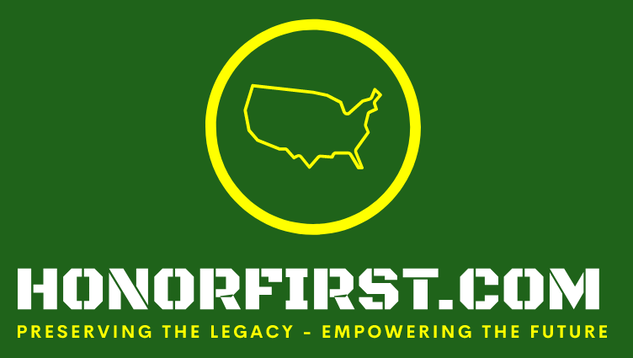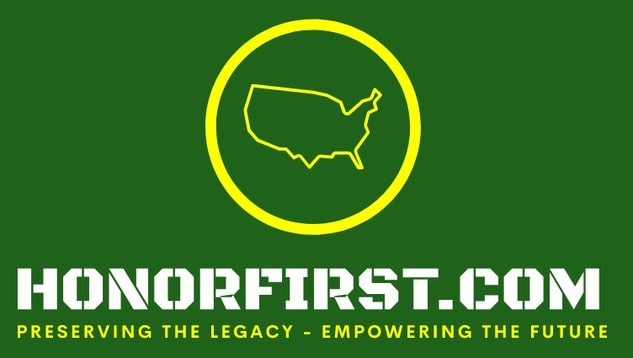May 15 - May 21Good morning! Welcome to another This Week in USBP History! Coming up on next week's anniversary of the Border Patrol, there are some documents that shed light into the uncertainty that existed as the Bureau of Immigration was on the brink of created ing the Border Patrol. Last week, with the April 30, 1924 memo, we saw there wasn't a plan that was being implemented. This week there are two documents of note. One concerning a recommendation for the title of the new position. The other, a lengthy and sharp criticism of only receiving $1,000,000 to to increase the "land-border patrol" and also includes what could be the foundations of "Honor First". I also present evidence that the first class a of a National Border Patrol Training School occurred on May 18, 1936, not on December 3, 1934. Those are your teasers! Let us also remember El Cajon Station Border Patrol Agent Daniel Salazar who was killed in an on-duty single vehicle accident on May 13, 2022. By the time of this writing, the Line of Death Determination has been made but not released. Have a great week! Cliff PS -
HOUSE KEEPING This is the section where I correct the mistakes from my last email. I will also use this section to provide other perspectives of USBP history.
Esprit de Corps The workplace climate resulting from a combination of organizational pride and employee morale.
Esprit de corps is reinforced through the shared goals, mission and values of the organization and its employees. The definition turns Esprit de Corps into a simple formula and defines parts that comprise organizational pride and employee morale. Esprit de Corps = Organizational Pride + Employee Morale Esprit de Corps is the key to a healthy organization and engaged employees. Honor First is foundational to the Border Patrol's organizational pride and integral to its Esprit de Corps. Documents/Events 1922
Newton-Azrak Award Action Anniversaries This Week in USBP History, 05/08-05/145/8/2022 0 Comments Welcome to another This Week in USBP History! There are no Newton-Azrak Award action anniversaries this week. But, I am highlighting five recipients from 1984 whose dates of action are unknown or whose actions spanned a timeframe. I should also mention that a Newton-Azrak Award recipient, George E. Evancheck (award statuette, notification letter), had somehow been omitted from any lists and was at risk of being forgotten. I have added him to the the HonorFirst Newton-Azrak Award page and will add more information once its found. Also, among the anniversaries of the fallen are Hector R. Clark and Eduardo Rojas, Jr. who fell due to the same incident in 2011. A sad fact is that the USBP has lost two Agents/Inspectors due to the same event nine times (18 fallen). Their names are listed below:
Have a great week! Cliff PS -
Housekeeping This is the section where I correct the mistakes from my last email. I will also use this section to provide other perspectives of USBP history. I didn't find any errors of significance from last week. Esprit de Corps The workplace climate resulting from a combination of organizational pride and employee morale.
Esprit de corps is reinforced through the shared goals, mission and values of the organization and its employees. The definition turns Esprit de Corps into a simple formula and defines parts that comprise organizational pride and employee morale. Esprit de Corps = Organizational Pride + Employee Morale Esprit de Corps is the key to a healthy organization and engaged employees. Honor First is foundational to the Border Patrol's organizational pride and integral to its Esprit de Corps. Documents/Events 1914
1924
1925
1928
1931
1934
1939
Newton-Azrak Award Action Anniversaries Follow this link to see examples of USBP employees Upholding Honor First.
2007 Dan M. Harris Jr. - photo Assistant Chief Patrol Agent Marfa Sector Assistant Chief Patrol Agent Dan M. Harris Jr. was recognized for demonstrating unusual courage during an extremely dangerous and stressful situation on May 17, 2007. Agent Harris was invited to Athens, Texas to be the guest speaker at the Henderson County Peace Officer Memorial Service. During the service, Henderson County Deputy David Harris received a call for emergency backup due to shots being fired at a domestic disturbance. Upon arrival, the deputies began receiving gunfire and tragically, two deputies were shot and killed and another deputy was wounded. Agent Harris exposed himself to extreme risk or loss of life in order to render aid to the wounded deputy. Also being a certified Emergency Medical Technician, he was able to stabilize the wound with the assistance of other deputies. USBP Fallen
As of December 8, 2021, the U.S. Border Patrol has suffered 151* fallen. Titles:
The names that appear below hold a place of honor. They have made the ultimate sacrifice in an effort to fulfill the oath each officer took to protect and defend the United States of America. The facts regarding each officer are presented without major editing of the "language of the day" found in the reports detailing the circumstances of each event. This is done to provide the reader an association with historical timeframes. Employees who died in the line of duty due to being exposed to deadly illnesses will not have the cause of death listed. *With the exception of two of the fallen immediately below, all names are listed (or in the process of being included) on the official Honor Roll of U.S. Border Patrol Fallen and inscribed on the National Law Enforcement Officers Memorial. The U.S. Border Patrol should fix these discrepancies. HonorFirst.com honors both of the fallen.
2009 Cruz C. McGuire Date of Birth: January 19, 1962 Entered on Duty: September 30, 1984 Title: Border Patrol Agent End of Watch: May 21, 2009 Details: Border Patrol Agent Cruz McGuire, of the Del Rio Texas Station, collapsed the morning of May 21, 2009. Attempts by his fellow agents and medical professionals to revive him were unsuccessful. At the time of his collapse, Agent McGuire was working a trail with other agents. Agent McGuire began his career in law enforcement with the Del Rio Police Department and later joined the Kinney County Sheriff’s Office. Agent McGuire graduated with the 166th Session of the Border Patrol Academy and was assigned to the Kingsville Station. Agent McGuire transferred to the Del Rio Station on April 12, 1998.
Comments
|
Clifford GillBlog author, retired U.S. Border Patrol Assistant Chief and, current U.S. Border Patrol employee advocate. Ray HarrisSite founder and owner, former Supervisory Border Patrol Agent and retired Immigration Special Agent. Joseph BancoU.S. Border Patrol historian and retired Deputy Chief Patrol Agent. Archives
July 2024
I prefer that you leave comments. However, if you wish to contact me, please do so by emailing [email protected].
|
- Home
-
For USBP Applicants
-
USBP Pages and Links
- Firearms Qualification Course
- Military Time Buy Back
- Station MWRs
- Transitioning Out of the USBP
- Fast & Furious
- U.S. Border Patrol Fallen >
- Honor First and Esprit de Corps
- USBP Photo Galleries
- U.S. Border Patrol History >
- U.S. Border Patrol Honorary Awards
- Upholding Honor First >
- U.S. Border Patrol Authorized Devices
- Border Patrol Stories
- What's Important Now - Academy Podcast
- Badges
- Veterans
- Tips for the Media
- Links
- Acronyms
- Border Patrol Locations
- Sector/Station FaceBook Pages
- Ten Codes
- Online Forums
- Search
- Home
-
For USBP Applicants
-
USBP Pages and Links
- Firearms Qualification Course
- Military Time Buy Back
- Station MWRs
- Transitioning Out of the USBP
- Fast & Furious
- U.S. Border Patrol Fallen >
- Honor First and Esprit de Corps
- USBP Photo Galleries
- U.S. Border Patrol History >
- U.S. Border Patrol Honorary Awards
- Upholding Honor First >
- U.S. Border Patrol Authorized Devices
- Border Patrol Stories
- What's Important Now - Academy Podcast
- Badges
- Veterans
- Tips for the Media
- Links
- Acronyms
- Border Patrol Locations
- Sector/Station FaceBook Pages
- Ten Codes
- Online Forums
- Search


 RSS Feed
RSS Feed
